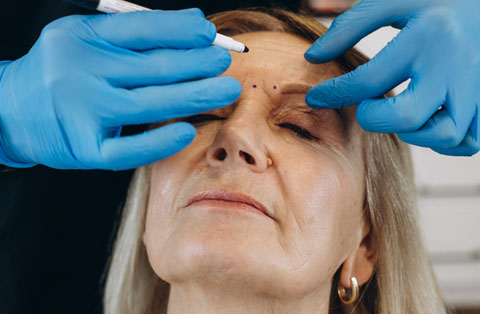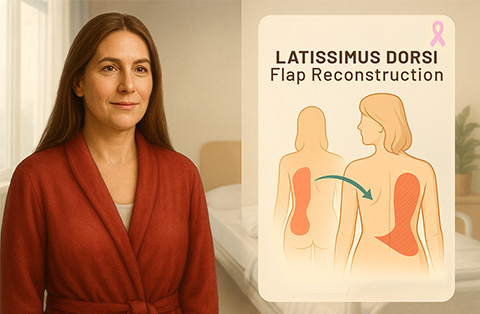Facial weakness can be alarming, but is it Bell’s palsy or a stroke? Knowing the difference is crucial for fast, life-saving action. Learn key signs, risks, and treatments to respond effectively.
What are the key differences between Bell's Palsy and Acute Stroke symptoms?
Stroke and Bell’s palsy are two distinct conditions that can both cause one-sided facial paralysis.
Bell’s palsy and acute stroke both cause facial weakness, but they have key differences:
Bell’s Palsy Symptoms
Bell’s palsy usually impacts one side of the face, causing sudden weakness or paralysis.
Facial droop and trouble making facial expressions, such as closing an eye or smiling.
Onset: Develops over hours to days.
Facial Weakness: Affects the entire half of the face, including the forehead. The patient cannot close the eye or raise the eyebrow.
Other Symptoms: May include ear pain, changes in taste, or increased sensitivity to sound.
Body Involvement: No weakness or numbness in the arms or legs.
Speech and Swallowing: Usually not affected.
Acute Stroke Symptoms
Onset: Sudden, often within minutes.
Facial Weakness: Affects only the lower half of the face. The patient can still raise the eyebrow and close the eye.
Other Symptoms: Often includes arm or leg weakness, numbness, dizziness, vision problems, or difficulty speaking.
Body Involvement: One-sided weakness or numbness in the arms or legs.
Speech and Swallowing: May have slurred speech or trouble swallowing.
Recognizing these differences is important for seeking the right treatment quickly.
Additional neurological signs present in stroke but not in Bell's Palsy
Stroke often affects multiple areas of the brain, leading to additional neurological symptoms that are not present in Bell’s palsy. These include:
Arm and Leg Weakness: Paralysis or weakness on one side of the body.
Numbness or Tingling: Loss of sensation in the face, arm, or leg.
Speech Problems: Slurred speech or difficulty understanding language (aphasia).
Vision Changes: Blurred vision, double vision, or loss of vision in one eye.
Loss of Coordination: Trouble walking, dizziness, or loss of balance.
Severe Headache: Sudden, intense headache, especially in hemorrhagic stroke.
Confusion or Memory Issues: Difficulty thinking, remembering, or responding appropriately.
These symptoms suggest a medical emergency and require immediate attention.
How can you distinguish Bell's Palsy from a stroke in an emergency situation?
In an emergency, quick assessment helps distinguish Bell’s palsy from a stroke. Key differences include:
Facial Weakness Pattern
Bell’s Palsy: Entire half of the face is weak, including the forehead. The patient cannot close the eye or raise the eyebrow.
Stroke: Weakness affects only the lower face. The patient can still raise the eyebrow and close the eye.
Other Neurological Symptoms
Bell’s Palsy: No arm or leg weakness, no speech difficulty, and no loss of balance.
Stroke: Often includes arm/leg weakness, slurred speech, vision problems, or trouble walking.
Onset and Progression
Bell’s Palsy: Gradual onset over hours to days.
Stroke: Sudden onset within minutes.
FAST Assessment for Stroke
Face: One-sided droop, but can still raise the eyebrow.
Arm: One arm drifts downward when raised.
Speech: Slurred or confused speech.
Time: Immediate emergency response needed if stroke is suspected.
If there is any doubt, emergency medical care is necessary to rule out a stroke.
What are the common causes and risk factors for Bell's Palsy vs. Acute Stroke?
Bell’s Palsy: Causes and Risk Factors
Bell’s palsy is linked to nerve inflammation, often triggered by viral infections.
Common Causes
Reactivation of viruses like herpes simplex (cold sores) or varicella-zoster (shingles).
Autoimmune response causing facial nerve swelling.
Risk Factors
Recent viral infections (cold, flu, or herpes).
Diabetes.
Pregnancy, especially in the third trimester.
Family history of Bell’s palsy.
Acute Stroke: Causes and Risk Factors
Stroke occurs due to reduced blood flow to the brain, either from a blocked artery (ischemic stroke) or bleeding (hemorrhagic stroke).
Common Causes
Blood clots or plaque blocking brain arteries.
Ruptured blood vessels causing brain bleeding.
Risk Factors
High blood pressure.
Smoking.
Diabetes.
High cholesterol.
Heart disease or irregular heartbeat (atrial fibrillation).
Obesity and physical inactivity.
Excessive alcohol use.
Family history of stroke.
Understanding these differences helps in recognizing risks and seeking timely care.
Can Bell's Palsy turn into a stroke or vice versa?
Bell’s palsy does not turn into a stroke, and a stroke does not turn into Bell’s palsy. They are separate conditions with different causes.
Bell’s Palsy: Caused by inflammation of the facial nerve, usually due to a viral infection. It does not affect brain circulation.
Stroke: Caused by blocked or ruptured blood vessels in the brain, leading to reduced oxygen supply.
However, some risk factors overlap. For example, diabetes and high blood pressure increase the risk of both conditions. In rare cases, a stroke can mimic Bell’s palsy, making emergency evaluation important. If facial weakness occurs suddenly, medical attention is necessary to rule out a stroke.
What diagnostic tests are used to differentiate between Bell's Palsy and Acute Stroke?
Doctors use clinical evaluation and diagnostic tests to distinguish Bell’s palsy from a stroke.
Clinical Examination
Facial Weakness Pattern: Bell’s palsy affects the entire half of the face, including the forehead, while stroke spares the forehead.
Neurological Symptoms: Stroke often includes arm/leg weakness, speech difficulty, or vision problems.
Diagnostic Tests
Brain Imaging
CT Scan: Detects bleeding or blockages in the brain, ruling out stroke.
MRI: Provides detailed images of brain structures to identify small strokes.
Electromyography (EMG)
Assesses facial nerve function to confirm Bell’s palsy.
Blood Tests
Check for infections, diabetes, or risk factors like high cholesterol.
Lumbar Puncture (Rare Cases)
Used if an infection like meningitis is suspected.
If stroke is a possibility, immediate brain imaging is essential for proper diagnosis and treatment.
How do treatment approaches differ for Bell's Palsy and Acute Stroke?
Stroke needs urgent medical care. There are two main types of stroke. Ischemic strokes happen when a clot blocks blood flow. Doctors use medication to dissolve the clot. Hemorrhagic strokes occur when a blood vessel bursts. Surgery may be needed to stop the bleeding. After treatment, rehabilitation helps restore movement and prevent long-term disability.
Bell’s Palsy Treatment
Bell’s palsy is usually temporary and improves with supportive care. Treatment includes:
Corticosteroids: Reduce nerve inflammation, most effective if started within 72 hours.
Antiviral Medications: Sometimes used if a viral infection is suspected.
Eye Care: Artificial tears and eye protection to prevent dryness if the eyelid cannot close.
Physical Therapy: Facial exercises to help muscle recovery.
Most patients recover within weeks to months.
Acute Stroke Treatment
Stroke treatment depends on the type and severity:
Ischemic Stroke (Blocked Artery):
Clot-Busting Medications (tPA): Given within 4.5 hours to dissolve clots.
Mechanical Thrombectomy: Procedure to remove large clots from brain arteries.
Blood Thinners: Prevent future strokes.
Hemorrhagic Stroke (Brain Bleed):
Blood Pressure Control: Medications to reduce bleeding risk.
Surgery: May be needed to stop bleeding or relieve pressure.
Rehabilitation: Speech, physical, and occupational therapy to regain lost functions.
Immediate treatment is crucial for stroke, while Bell’s palsy often improves with time and supportive care.






